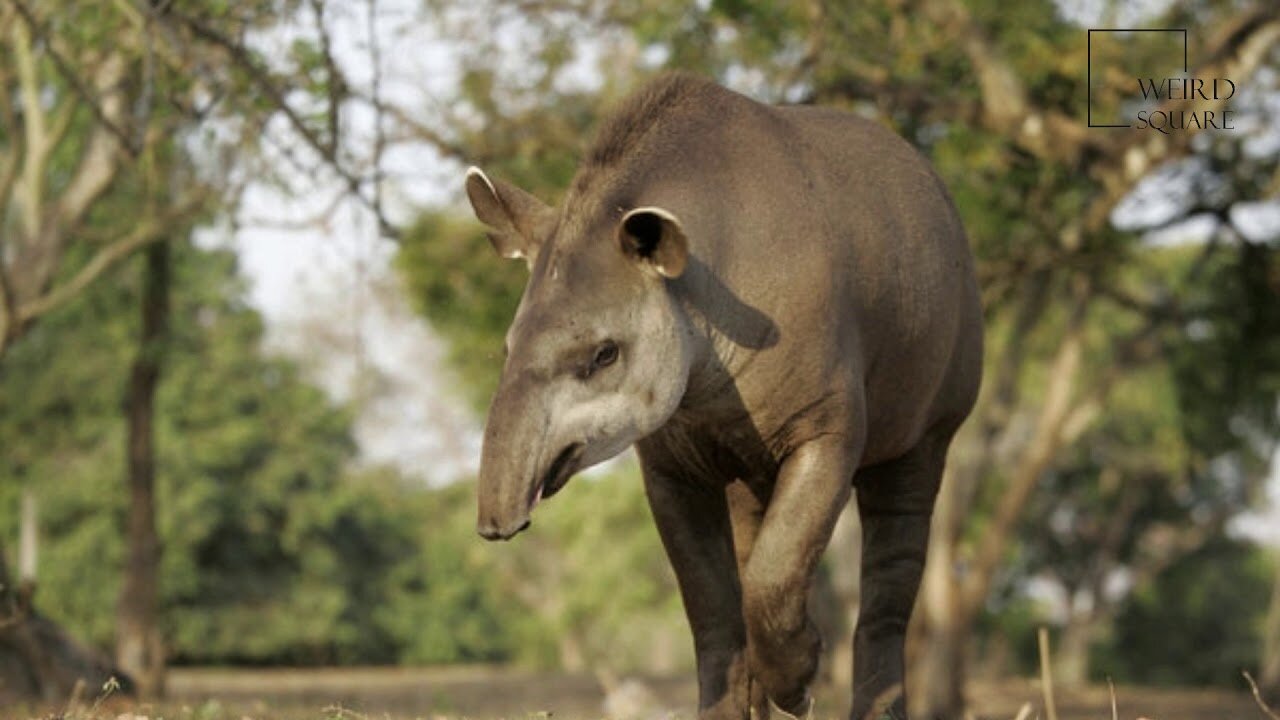Premium Only Content

Intersting facts about brazilian tapir by weird square
Description:
The Brazilian tapir, scientifically known as Tapirus terrestris, is a fascinating creature found in the dense forests and grasslands of South America. Also referred to as the South American tapir, it is the largest land mammal in the Amazon rainforest and plays a crucial role in maintaining the ecological balance of its habitat.
Interesting Facts:
Unique Appearance: Brazilian tapirs are distinguished by their large, barrel-shaped bodies covered in short, bristly fur that ranges in color from dark brown to reddish-brown. They have distinctive white markings on their face, throat, and ears, which provide camouflage in their natural environment.
Prehensile Snout: One of the most remarkable features of the Brazilian tapir is its elongated and flexible snout, which functions like a mini-trunk. This prehensile appendage helps them grasp and manipulate objects, as well as foraging for food in hard-to-reach places.
Solitary Creatures: Brazilian tapirs are primarily solitary animals, except during mating season or when a female is raising her young. They have large home ranges that they mark with scent glands to communicate with other tapirs.
Herbivorous Diet: These tapirs are herbivores, feeding on a variety of vegetation including leaves, fruits, and aquatic plants. Their diet plays a crucial role in seed dispersal, contributing to the regeneration of the forest.
Strong Swimmers: Brazilian tapirs are excellent swimmers and often seek refuge in water bodies when threatened by predators. They use their powerful bodies and webbed feet to navigate through rivers and streams with ease.
Endangered Status: Despite their importance to the ecosystem, Brazilian tapirs face numerous threats including habitat loss, hunting, and fragmentation of their habitat due to human activities. They are classified as vulnerable by the International Union for Conservation of Nature (IUCN), highlighting the need for conservation efforts to protect their populations.
Cultural Significance: In some indigenous cultures of South America, the Brazilian tapir holds spiritual significance and is considered a symbol of strength and resilience. It features prominently in folklore and traditional ceremonies.
Hashtags:
#BrazilianTapir #SouthAmericanTapir #RainforestMammal #WildlifeConservation #EcosystemProtection #EndangeredSpecies #AmazonBiodiversity #TapirFacts #WildlifeWednesday #BiodiversityHotspot
-
 15:27
15:27
TSPLY
21 hours agoCNN Forgets President Trump Can Fire Anyone He Wants From The Pentagon
1.44K9 -
 15:13
15:13
Clownfish TV
19 hours agoBluesky Trusts the Science? Scientists FLEEING X for Bluesky!
1.6K6 -
 29:50
29:50
The Finance Hub
14 hours ago $0.75 earnedBREAKING: TULSI GABBARD JUST DROPPED A MAJOR BOMBSHELL!!!
1.49K18 -
 11:32
11:32
ariellescarcella
15 hours ago"Being A Lady Boy Is Exciting!" (This Dude Has A Kid)
2.39K4 -
 1:03:33
1:03:33
The Dan Bongino Show
1 day agoSunday Special with Mike Benz, Michael Knowles, Rep. Tim Burchett and Rep. Andy Harris - 02/23/25
334K1.11K -
 1:36:21
1:36:21
Sarah Westall
12 hours agoViolence Erupting in the Panama Canal, Identifying Enemy Infiltration, Psyops Ongoing w/ Michael Yon
88.2K49 -
 1:56:25
1:56:25
Nerdrotic
14 hours ago $19.01 earnedThe Red Pyramid's Hidden Secrets | Forbidden Frontier #091
68.4K15 -
 2:08:53
2:08:53
vivafrei
23 hours agoEp. 252: Liberals DISQUALIFY Candidate from Race! DOGE Wins & Loses; Rumble Sues BRAZIL! & MORE!
159K269 -
 1:15:12
1:15:12
Josh Pate's College Football Show
13 hours ago $23.97 earnedCFB’s Top 12 Programs | TV Executives & Our Sport | USC Changes Coming | Early Championship Picks
109K3 -
 DVR
DVR
Vigilant News Network
17 hours agoUK Government BUSTED in Secret Plot to Extract Your Data | Media Blackout
113K27